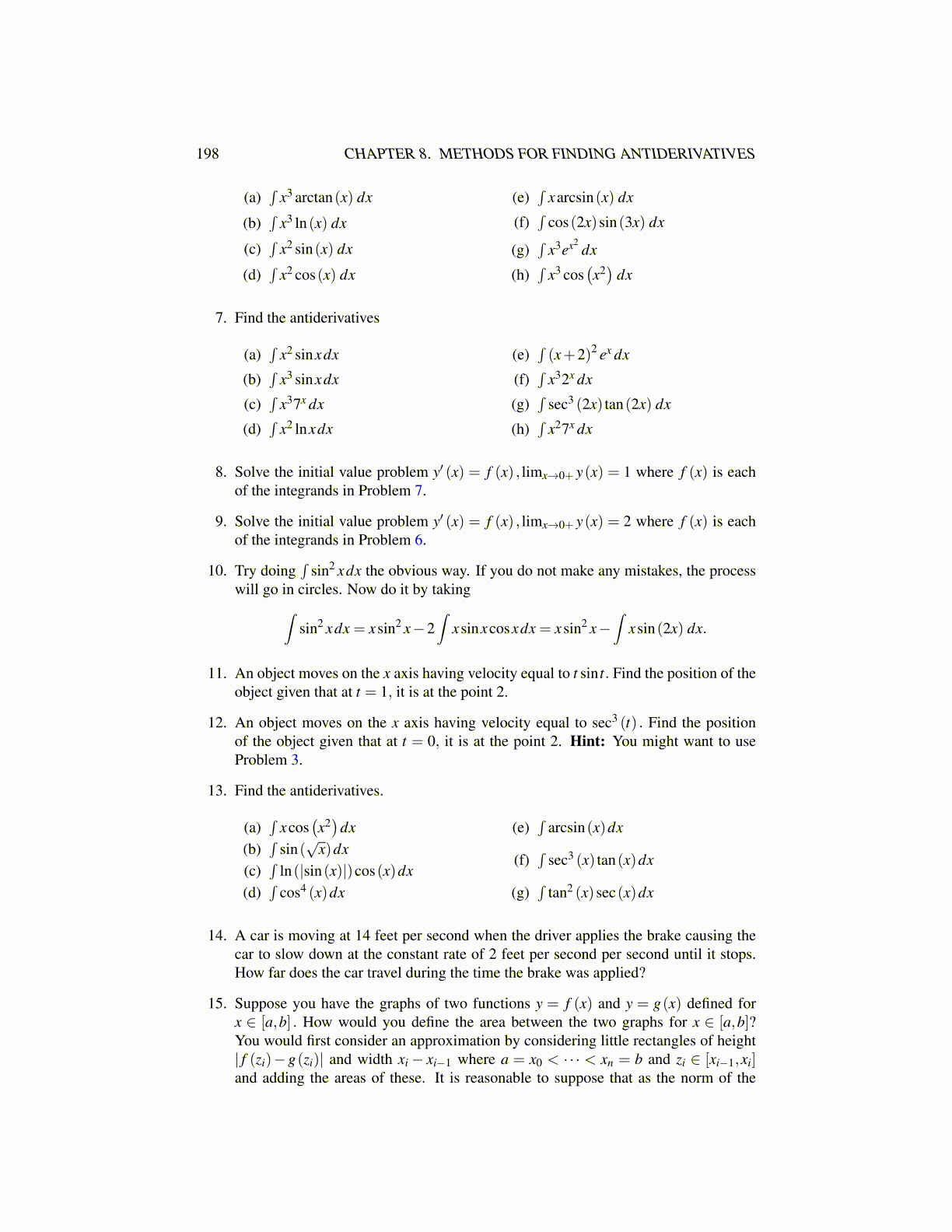
198 CHAPTER 8. METHODS FOR FINDING ANTIDERIVATIVES
(a)∫
x3 arctan(x) dx
(b)∫
x3 ln(x) dx
(c)∫
x2 sin(x) dx
(d)∫
x2 cos(x) dx
(e)∫
xarcsin(x) dx
(f)∫
cos(2x)sin(3x) dx
(g)∫
x3ex2dx
(h)∫
x3 cos(x2)
dx
7. Find the antiderivatives
(a)∫
x2 sinxdx
(b)∫
x3 sinxdx
(c)∫
x37x dx
(d)∫
x2 lnxdx
(e)∫(x+2)2 ex dx
(f)∫
x32x dx
(g)∫
sec3 (2x) tan(2x) dx
(h)∫
x27x dx
8. Solve the initial value problem y′ (x) = f (x) , limx→0+ y(x) = 1 where f (x) is eachof the integrands in Problem 7.
9. Solve the initial value problem y′ (x) = f (x) , limx→0+ y(x) = 2 where f (x) is eachof the integrands in Problem 6.
10. Try doing∫
sin2 xdx the obvious way. If you do not make any mistakes, the processwill go in circles. Now do it by taking∫
sin2 xdx = xsin2 x−2∫
xsinxcosxdx = xsin2 x−∫
xsin(2x) dx.
11. An object moves on the x axis having velocity equal to t sin t. Find the position of theobject given that at t = 1, it is at the point 2.
12. An object moves on the x axis having velocity equal to sec3 (t) . Find the positionof the object given that at t = 0, it is at the point 2. Hint: You might want to useProblem 3.
13. Find the antiderivatives.
(a)∫
xcos(x2)
dx(b)
∫sin(
√x)dx
(c)∫
ln(|sin(x)|)cos(x)dx(d)
∫cos4 (x)dx
(e)∫
arcsin(x)dx
(f)∫
sec3 (x) tan(x)dx
(g)∫
tan2 (x)sec(x)dx
14. A car is moving at 14 feet per second when the driver applies the brake causing thecar to slow down at the constant rate of 2 feet per second per second until it stops.How far does the car travel during the time the brake was applied?
15. Suppose you have the graphs of two functions y = f (x) and y = g(x) defined forx ∈ [a,b] . How would you define the area between the two graphs for x ∈ [a,b]?You would first consider an approximation by considering little rectangles of height| f (zi)−g(zi)| and width xi − xi−1 where a = x0 < · · · < xn = b and zi ∈ [xi−1,xi]and adding the areas of these. It is reasonable to suppose that as the norm of the